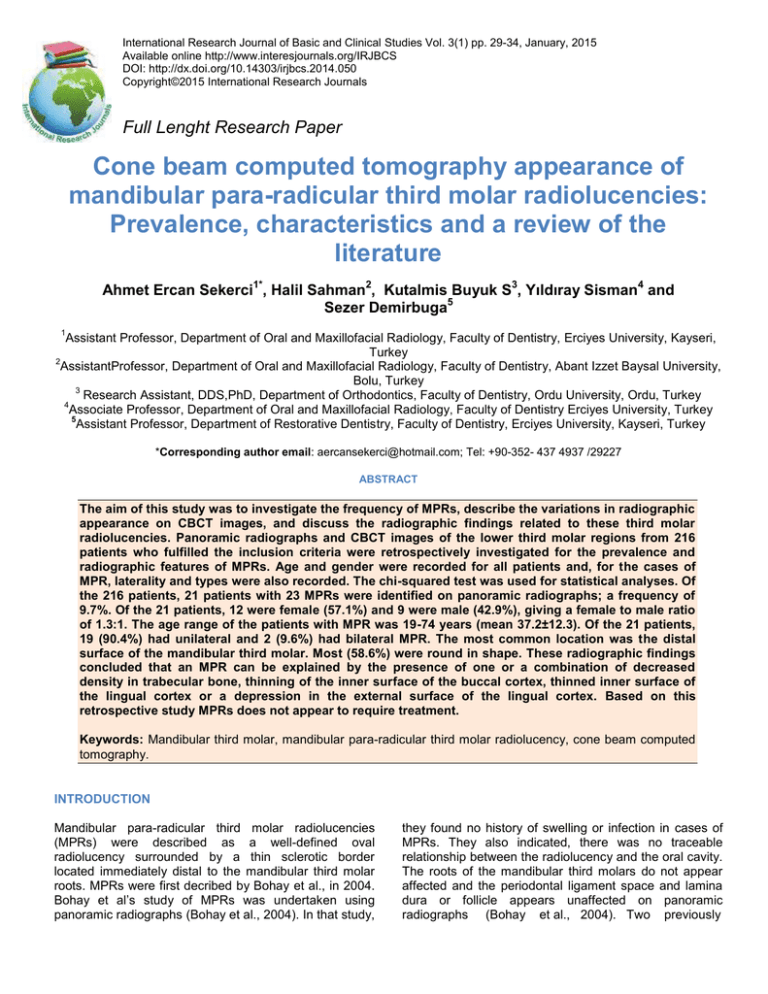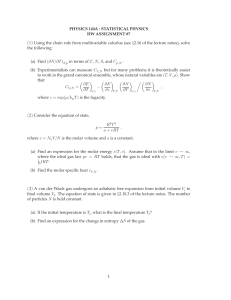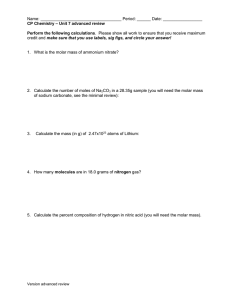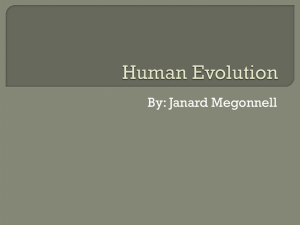Document 14081109
advertisement

International Research Journal of Basic and Clinical Studies Vol. 3(1) pp. 29-34, January, 2015 Available online http://www.interesjournals.org/IRJBCS DOI: http://dx.doi.org/10.14303/irjbcs.2014.050 Copyright©2015 International Research Journals Full Lenght Research Paper Cone beam computed tomography appearance of mandibular para-radicular third molar radiolucencies: Prevalence, characteristics and a review of the literature Ahmet Ercan Sekerci1*, Halil Sahman2, Kutalmis Buyuk S3, Yıldıray Sisman4 and Sezer Demirbuga5 1 Assistant Professor, Department of Oral and Maxillofacial Radiology, Faculty of Dentistry, Erciyes University, Kayseri, Turkey 2 AssistantProfessor, Department of Oral and Maxillofacial Radiology, Faculty of Dentistry, Abant Izzet Baysal University, Bolu, Turkey 3 Research Assistant, DDS,PhD, Department of Orthodontics, Faculty of Dentistry, Ordu University, Ordu, Turkey 4 Associate Professor, Department of Oral and Maxillofacial Radiology, Faculty of Dentistry Erciyes University, Turkey 5 Assistant Professor, Department of Restorative Dentistry, Faculty of Dentistry, Erciyes University, Kayseri, Turkey *Corresponding author email: aercansekerci@hotmail.com; Tel: +90-352- 437 4937 /29227 ABSTRACT The aim of this study was to investigate the frequency of MPRs, describe the variations in radiographic appearance on CBCT images, and discuss the radiographic findings related to these third molar radiolucencies. Panoramic radiographs and CBCT images of the lower third molar regions from 216 patients who fulfilled the inclusion criteria were retrospectively investigated for the prevalence and radiographic features of MPRs. Age and gender were recorded for all patients and, for the cases of MPR, laterality and types were also recorded. The chi-squared test was used for statistical analyses. Of the 216 patients, 21 patients with 23 MPRs were identified on panoramic radiographs; a frequency of 9.7%. Of the 21 patients, 12 were female (57.1%) and 9 were male (42.9%), giving a female to male ratio of 1.3:1. The age range of the patients with MPR was 19-74 years (mean 37.2±12.3). Of the 21 patients, 19 (90.4%) had unilateral and 2 (9.6%) had bilateral MPR. The most common location was the distal surface of the mandibular third molar. Most (58.6%) were round in shape. These radiographic findings concluded that an MPR can be explained by the presence of one or a combination of decreased density in trabecular bone, thinning of the inner surface of the buccal cortex, thinned inner surface of the lingual cortex or a depression in the external surface of the lingual cortex. Based on this retrospective study MPRs does not appear to require treatment. Keywords: Mandibular third molar, mandibular para-radicular third molar radiolucency, cone beam computed tomography. INTRODUCTION Mandibular para-radicular third molar radiolucencies (MPRs) were described as a well-defined oval radiolucency surrounded by a thin sclerotic border located immediately distal to the mandibular third molar roots. MPRs were first decribed by Bohay et al., in 2004. Bohay et al’s study of MPRs was undertaken using panoramic radiographs (Bohay et al., 2004). In that study, they found no history of swelling or infection in cases of MPRs. They also indicated, there was no traceable relationship between the radiolucency and the oral cavity. The roots of the mandibular third molars do not appear affected and the periodontal ligament space and lamina dura or follicle appears unaffected on panoramic radiographs (Bohay et al., 2004). Two previously 30 Int. Res. J. Basic Clin. Stud. Table1. Prevalence of mandibular para-radicular third molar radiolucencies from previous studies Reference 1 Bohay et al. 2 Dalton et al. Year Review source 2004 2011 Sample size Panoramic 822 Panoramic 143 and CT Present series 2014 Panoramic 216 and CBCT MPRs: Mandibular para-radicular third molar radiolucencies Number of cases Number of MPRs 68 12 21 Gender 70 14 F 46 8 M 18 4 23 12 9 CT: Computed tomography published papers discussed these radiolucencies (Table 1) (Bohay et al., 2004 and Dalton et al., 2011). Bohay et al., (2004) reported these shadows are most likely anatomical variations and have named them MPR. Dalton et al’s study on panoramic films and CT images stated that the relative lucent appearance can be explained by the presence of one or a combination of factors. Kay (1974) and Kocsis et al., (1992) discussed similar radiolucencies. Bohay et al distinguished MPRs from other lucencies near the lower third molars, such as Stafne cyst, the paradental cyst, pericoronitis, periapical inflammatory pathology and pathology of the dental follicle (Bohay et al., 2004). As is known, all plain film radiography, panoramic radiographs provide only a two dimensional view. In the past decade, development of cone-beam computed tomography (CBCT) systems, reducing the dose of radiation adsorbed by the patient, has led to increased clinical use in dentistry and its specialties. CBCT technology has had a substantial impact on maxillofacial region and it has facilitated diagnosis and has a role for image guidance of operative and surgical procedures through the advanced software it has. After the introduction of CBCT which is specifically dedicated to imaging the maxillofacial region, accessing and image reconstruction of 3D data have become more available in dentistry. It has been applied to diagnosis in all areas of dentistry and now expanding into treatment applications (Kau et al., 2005). The aims of this study was to evaluate accuracy of the mandibular third molar para-radicular radiolucencies (MPRs) based on panoramic radiographs and cone beam computed tomography (CBCT) and to discuss Bohay et al., and Dalton et al’s findings and to identify and document the appearance of MPRs on CBCT. MATERIALS AND METHODS We designed a retrospective cohort study composed of 216 panoramic radiographs and CBCT (Newtom 5G, QR, Verona, Italy) image files from patients who presented to the Erciyes University Dentistry Faculty, Kayseri, Turkey. After the raw data was acquired, the primary Age (years) Laterality Unilateral Bilateral Prevalence % 18-42 22-52 58 8 6 2 7.8 8.4 21-68 19 2 9.7 CBCT:Cone beam computed tomography reconstruction to obtain axial slices with a 0.25 mm thickness. Tomographic images and panoramic radiographs of the patient were taken in the same week. The raw data of each patient was reconstructed to study data which has 75 µm voxel size. A secondary reconstruction was subsequently performed, and panoramic, axial, sagittal, coronal, and cross-sectional slices with the required thickness and width were obtained. Radiographic examination of the lower molar region was based on digital panoramic films ® (Orthopantomograph OP 200D: Instrumentarium Corp. Imaging Division, Tuusula, Finland) and CBCT images independently by three dentists with over five years of experience. All radiographs were performed by radiography technicians who had a minimum working experience of five years. The images were examined by three investigators (one associate professor and the other two dentomaxillofacial radiologiy assistants at Erciyes University) at the same time. Patients with radiolucencies in the mandibular third molar regions related to inflammatory periapical lesions, endodonticperiodontic lesions, advanced pericoronitis, paradental cysts or follicular pathology were excluded from the study ( the patient's files enough to provide those information). To check for the diagnostic reproducibility of the interreliability of the three investigators, 10% of the radiographs assigned to them were randomly examined each day for three consecutive days. Examination of results using the Cohen’s kappa test showed no statistically significant differences between the three observers, indicating diagnostic reproducibility. In total, two hundred and sixteen patients (482 sides) with an MPR visible on CBCT image were collected. Three hundred and eighty six mandibular third molars were assessed radiographically. The age and sex were recorded for all patients and for the cases of MPR, age, sex, laterality, and location. The mandibular canal was color-marked by the “Show Mark” tool in the NNT viewer software of the CBCT machine in reconstructed panoramic images having a 0,5-mm slice thickness and interval. Crosssectional images with a thickness of 0,25 mm and an interval of 0,5 mm perpendicular to the mesiodistal and buccolingual axes of third molars were Sekerci et al. 31 prepared. Overall, multiplanar reconstructed images were used to determine the topographic relationship between the impacted teeth and the mandibular canal more accurately. CBCT images were recorded according to modified Dalton analysis (Dalton et al., 2011). The variables were analyzed using the Statistical Package for the Social Sciences program (ver. 11.5; SPSS, Chicago, IL, USA). The chi-squared test was used to determine the potential differences in the distribution of MPRs when stratified by gender, age, laterality and types. A p value of < 0.05 was considered statistically significant. RESULTS Of the 216 patients, 21 patients with 23 MPRs were identified on panoramic radiographs; a frequency of 9.7%. The average age was 37.4 (SD 12.3) years and the age range was 19-74 years. There were 102 females (47.2%) and 114 males (52.8%) in the study population. 21 patients (9.7%) of 216 individuals had 23 MPR, of whom 12 were female (57.1%) and 9 were male (42.9%) with a female-to-male ratio of 1.3:1. This difference was not statistically significant (p > 0.05). The age range of the patients with MPR was 21-68 years (mean 37.2 ± 12.3). Mean age was 31.1 years for females and 34.0 years for males. The youngest patient with MPR was a 21-year-old female. Fourteen of the MPRs were located on the left side and the others were located on the right (Figure 1 a-e). Of the 23 cases, 9 (39.1%) were associated with a mesioangular impacted mandibular third molar, 5 (21.7%) had a distoangular impacted mandibular third molar, 3 (14.2%) had a horizontal impacted mandibular third molar and the remaining case was vertically impacted. In this study, 17 of the 23 MPRs observed on panoramic radiographs were separated from the lower third molar by the periodontal ligament space and lamina dura. The other cases, no periodontal ligament space or lamina dura could be seen. 60.8% of MPRs were superimposed over the inferior alveolar canal and the remaining 39,2% were completely superior to the canal and, with the exception of 4 cases, all had a corticated margin. Fifteen cases (65.2%) were round in shape and others were oval. The most common location of MPR (60.4%) was the distal surface of the mandibular third molar. These differences were statistically significant (p < 0.05). Four cases were located adjacent to the apical half of the third molar root, thirteen adjacent to the coronal half, three ran the entire length of the root and others were adjacent to the middle of the root. All cases were identifiable on CBCT and cases were visible in 0.25 mm slices and 0.5 mm slices. All MPRs could be seen in the axial plane and sixteen MPRs were noticeable in all three planes (Figure 1 b-e below). Twenty-one cases were noticeable in the sagittal plane and seven cases were noticeable in the coronal plane. Of the 23 cases noticeable on CBCT, 17 appeared less dense than the surrounding bone (74.0%). Others had the same density as surrounding bone. All cases visible on CBCT, 19 had some thinning of the cortical plate in the area of the MPR. Four cases had no cortical thinning. 16 of the MPRs had a corticated margin visible on CBCT and 14 cases had faint internal trabeculations in the MPR seen on CBCT. No expansion of the area was seen in any case, nor was root resorption seen. On CBCT, in the sagittal plane, height was measured as 2.26 to 9.0 mm (mean 5.85 mm) and width as between 1.87 and 9.7 mm (mean 4.25 mm). In the axial plane, length (mesial-distal) was measured as 2.6 to 6.83 mm (mean 3.65 mm) and width (buccolingually) as between 1.43 and 5.8 mm (mean 2.66 mm). DISCUSSION Although the presence of radiolucency of the mandibular para-radicular third molar root is a poorly documented radiographic finding for dentists and oral surgeons, it is still uncertain what anatomical features this finding reflects. To answer this clinical question, we correlated the imaging features of cone beam CT. MPRs were first described by Bohay et al., (2004) as a well-defined oval radiolucency surrounded by a thin sclerotic border located immediately distal to the mandibular third molar roots. Their analysis of MPRs was undertaken on panoramic radiographs and they can’t determine if the MPR is due to a surface depression on the buccal or lingual aspect of the mandible or if there is a decrease in bone density between the cortical plates (Bohay et al., 2004). Dalton et al’s (2011) study has shown that MPRs are clearly identified on CT in one or a combination of ways: i- An area of decreased density in trabecular bone, ii- Thinning of the inner surface of the buccal cortex; iiiThinning of the inner surface of the lingual cortex, iv- A depression in the external surface of the lingual cortex (Dalton et al., 2011). Our study had same findings to Dalton et al’s study (Dalton et al., 2011). This study has also shown that the relative clear presence on CBCT is explained by the occurrence of one or more of these factors, which results in either less dense or thick bone. Many studies analysing panoramic imaging features reported that the darkening of the third molar root where the mandibular canal was superimposed was strongly suggestive of an intimate relationship between the root and nerve, or nerve injury following third molar extraction (Valmaseda-Castello´n et al., 2001; Kipp et al., 1980; Monaco et al., 2004; Howe GL and Poyton HG, 1960; Rood JP and Shehab BA, 1990; Bell GW, 2004; Rud J, 1983; de Melo Albert et al., 2006 and Sedaghatfar et al., 2005). Dalton et al., (2011) reported that MPRs do not relate to the IAC (Dalton et al., 2011). 28.6% of cases were located completely superior to the canal on 32 Int. Res. J. Basic Clin. Stud. Figure1. A cropped radiographic example from case 8 of the mandibular third molar para-radicular radiolucency (a). Cropped sagittal (b), axial (c), coronal (d) and three-dimensional CT from Case 8 showing a mandibular para-radicular third molar radiolucency (MPR) (white arrows); note the mandibular canal (black arrows). Sekerci et al. 33 panoramic radiographs, and on CT all cases were independent of the canal. In Dalton et al’s (2011) study MPRs were found that 64.3% occurred on the left side and 35.7% on the right, 42.9% were associated with a mesioangular impacted, 50% of cases had a distoangular and the remaining case was vertically impacted lower third molar. All MPRs in that study were adjacent to unerupted or impacted teeth. No cases have been identified adjacent to fully erupted teeth. This study had different findings to Bohay et al., (2004) on panoramic radiographs and Dalton et al., (2011) on panoramic radiographs and CT. While Bohay et al., (2004) reported an incidence of 7.8%, which is similar to Dalton et al’s (2011) study's finding of 8.4%, this study's finding of 9.7%. A female preponderance with female to male ratio of 2:1 was found in Dalton et al’s (2011) study and Bohay et al., (2004) reported a higher incidence in females and a ratio of 2.6:1. In this study, this ratio was found a lower incidence; 1.3:1. This study had similar findings to Bohay et al., (2004) on panoramic radiographs. Fifty-eight patients (90.6%) had unilateral MPRs and 6 patients (9.4%), all female, had bilateral MPRs. In this study, of the 21 patients had bilateral lower third molar, 19 (90.4%) had unilateral and 2 (9.6%) had bilateral MPR. However, Bohay et al's article does not state if contralateral teeth were missing and if these cases were then considered unilateral. All cases were unilocular, as were all cases in Bohay's study. In Dalton et al’s study, of the 12 patients, 8 had unilateral MPRs (66.7%). Two patients (16.7%) had bilateral MPRs: one female and one male. In the remaining two patients the contralateral lower third molar was missing and unilateral or bilateral occurrence could not be ascertained. In our study, on panoramic views, 17 of the 23 MPRs observed were separated from the lower third molar by the periodontal ligament space and lamina dura. This confirmed Bohay et al's and Dalton et al’s findings. In the remaining cases, no PDL space or lamina dura could be seen. This may have been because of patient rotation or poor panoramic resolution. In present study, the majority of MPRs (60.8 %) were superimposed over the IAC. None were positioned inferior to the canal. All MPRs except for four cases had a corticated margin. These are consistent with Bohay et al's and Dalton et al’s findings. Fifteen cases were round in shape and others had an oval shape on panoramic film. Similarly, Dalton et al reported ten cases were round in shape and four cases had an oval shape on panoramic film. But our and Dalton et al’s findings varied to Bohay et al's findings; besides, that paper did not describe what was considered round or oval. Bohay et al's, Dalton et al’s and this study indicated that the MPR can be located anywhere along the mandibular third molar root. Bohay et al., (2004) suggested that MPRs are not the buccal depression described by Kocsis et al., (1992). The differential diagnosis for posterior buccal mandibular defects includes an anatomic variant, aneurysmal erosion, erosion by a lymphoid nodule, and a neural neoplasm (Kocsis et al., 1992). In addition, they believe it is unlikely MPRs would be radiographically evident due to the density of the root and thinness of the bone over the roots (Bohay et al., 2004). According to Dalton et al’s suggestion, the occurrence of MPRs on computed tomography highlights that MPRs are ''real'' and not merely a radiographic darkening behind a tooth of high density and absorption (Dalton et al., 2011). None of the MPRs seen on computed tomography related to a depression in the buccal cortex. MPRs are unlikely to be pathology because no root resorption or expansion was seen in any case on CT images. The MPRs that are seen on CT as a depression in the lingual cortex could be considered normal anatomical variations (Dalton et al., 2011). Our findings are consistent with Dalton et al’s findings. There are other conditions such as the paradental cyst, pericoronitis, Stafne cyst, periapical inflammatory pathology and pathology of the dental follicle (Kay LW, 1974) that can involve the roots of the mandibular third molar and these should be considered in the differential diagnosis. In addition, focal osteoporotic bone marrow defects or marrow spaces can be defined as asymptomatic radiolucencies mainly in the mandibular molar region (Barker et al., 1974; Cheng et al., 2006 and Schneider et al., 1988). Vascular malformations are primarily lytic lesions with variable expansion and latticelike coarse trabeculations (Vargel et al., 2004). Thus, this study confirmed and extended the findings of Bohay et al., (2004) and Dalton et al., (2011) concluded that an MPR is a well-defined corticated, oval or round lucency that is located adjacent to any part of the root of an impacted mandibular third molar region. If an MPR is noted on a panoramic film then advanced imaging is not required as MPRs cannot be considered pathology, but the possibility of a great marrow space and increased bleeding could be considered (Dalton et al., 2011). CONCLUSION In conclusion, MPR can be explained by the presence of one or a combination of decreased density in trabecular bone, thinning of the inner surface of the buccal cortex, thinned inner surface of the lingual cortex or a depression in the external surface of the lingual cortex. REFERENCES Bohay RN, Mara TW, Sawula KW, Lapointe HJ (2004). A preliminary radiographic study of mandibular para-radicular third molar radiolucencies. Oral Surg Oral Med Oral Pathol Oral Radiol Endod. 98:97-101. Dalton J, Mahoney M, Savage N (2011). Computed tomography appearance of mandibular para-radicular third molar 34 Int. Res. J. Basic Clin. Stud. radiolucencies. Dentomaxillofac Radiol. 40:47-52. Kay LW (1974). Some anthropologic investigations of interest to oral surgeons. Int J Oral Surg. 3:363-369. Kocsis GS, Marecsik A, Mann RW (1992). Idiopathic bone cavity on the posterior buccal surface of the mandible. Oral Surg Oral Med Oral Pathol. 73:127-130. Kau CH, Richmond S, Palomo JM, Hans G (2005). Three-dimensional cone beam computerized tomography in orthodontics. J Orthod. 32:282-93. Quek SL, Tay CK, Tay KH, Toh SL, Lim KC (2003). Pattern of third molar impaction in a Singapore Chinese population: a retrospective radiographic survey. Int J Oral Maxillofac Surg. 32:548-552. Valmaseda-Castello´n E, Berini-Ayte´s L, Gay-Escoda C (2001). Inferior alveolar nerve damage after lower third molar surgical extraction: A prospective study of 1117 surgical extractions. Oral Surg Oral Med Oral Pathol Oral Radiol Endod. 92:377-383. Kipp DP, Goldstein BH, Weiss Jr. WW (1980). Dysesthesia after mandibular third molar surgery: a retrospective study and analysis of 1,377 surgical procedures. J Am Dent Assoc. 100:185-192. Monaco G, Montevecchi M, Bonetti GA, Gatto MR, Checchi L (2004). Reliability of panoramic radiography in evaluating the topographic relationship between the mandibular canal and impacted third molars. J Am Dent Assoc. 135:312-318. Howe GL, Poyton HG (1960). Prevention of damage to the inferior dental nerve during the extraction of mandibular third molars. Br Dent J.109:355-363. Rood JP, Shehab BA (1990). The radiological prediction of inferior alveolar nerve injury during third molar surgery. Br J Oral Maxillofac Surg. 28:202-5. Bell GW (2004). Use of dental panoramic tomographs to predict the relation between mandibular third molar teeth and the inferior alveolar nerve. Radiological and surgical findings, and clinical outcome. Br J Oral Maxillofac Surg. 42:21-27. Rud J (1983). Third molar surgery: relationship of root to mandibular canal and injuries to inferior dental nerve. Tandlaegebladet. 87:619-631. de Melo Albert DG, Gomes AC, do Egito Vasconcelos BC, de Oliveira e Silva ED, Holanda GZ (2006). Comparison of orthopantomographs and conventional tomography images for assessing the relationship between impacted lower third molars and the mandibular canal. J Oral Maxillofac Surg. 64:1030-1037. Sedaghatfar M, August MA, Dodson TB (2005). Panoramic radiographic findings as predictors of inferior alveolar nerve exposure following third molar extraction. J Oral Maxillofac Surg. 63: 3–7. Barker BF, Jensen JL, Howell FV (1974). Focal osteoporotic bone marrow defects of the jaws. An analysis of 197 new cases. Oral Surg Oral Med Oral Pathol. 38:404-413. Cheng NC, Lai DM, Hsie MH, Liao SL, Chen YB (2006). Intraosseous hemangiomas of the facial bone. Plast Reconstr Surg. 117:23662372. Schneider LC, Mesa ML, Fraenkel D (1988). Osteoporotic bone marrow defect: radiographic features and pathogenic factors. Oral Surg Oral Med Oral Pathol. 65:127-129. Vargel I, Cil BE, Kiratli P, Akinci D, Erk Y (2004). Hereditary intraosseous vascular malformation of the craniofacial region: imaging findings. Br J Radiol. 77:197-203. How to cite this article: Ahmet Ercan Sekerci, Halil Sahman, Kutalmis Buyuk S, Yıldıray Sisman and Sezer Demirbuga (2015). Cone beam computed tomography appearance of mandibular para-radicular third molar radiolucencies: Prevalence, characteristics and a review of the literature. Int. Res. J. Basic Clin. Stud. 3(1):29-34





